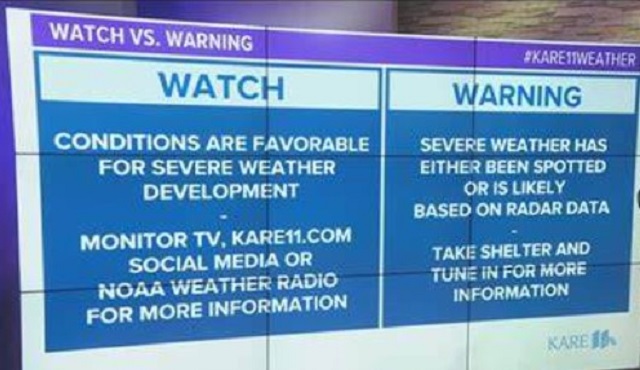SURPRISING STUFF
It was the March that was.
What a crazy month the last month was. A monster snowstorm breaking all records for all time in depth, and then the rapidity of the snow’s disappearance with warm weather, and then there was the two to four-inch-deep ice storm, wreaking havoc down on the trees and plant growth not yet ready for spring. Warmth and cold, rain and then snow, all working back and forth through the 31 days. Global warming may be here but the effects during March around Geneva Lake weren’t about warmth, they were about the inability to forecast what’s coming next, in spite of great advances in satellite and other predictive technical equipment.
What is a weather ‘watch’ versus a ‘warning,’ and how to prepare for each, or both?
Watches are issued by the National Weather Service for counties where severe weather might occur, and are typically large areas, covering several counties and states. Warnings are issued by national weather forecasting agencies when meteorological conditions are favorable for the development of severe thunderstorms capable of producing tornadoes. The best way to prepare is to make a plan and have an emergency kit with first aid items and necessities. You should identify the best places to shelter both indoors and outdoors.
The best items to have prepared to stay safe during a tornado are:
- Fresh batteries and a battery-operated radio to listen to the latest emergency weather information,
- An emergency kit, including water, non-perishable food, and medication.
- A list of important information, including telephone numbers/
Be aware of weather conditions by paying close attention. According to the CDC, some tornadoes strike rapidly without time for a warning. Signs that a tornado is approaching include: a dark or green-colored sky, large, dark, and low-lying clouds, also large hail, and loud roaring that sounds like a freight train. If a tornado has been sighted by weather radar or spotted on the ground, the watch will be upgraded to a warning, indicating that there is imminent danger to both life and property.
Warnings are for smaller areas, like a city or small county. You should immediately take action by moving to an interior room on the lowest floor of a sturdy building, or better yet a basement. If you don’t have a basement, you should find a room without windows, such as a bathroom, closet, or center hallway. You should also try getting under something sturdy for extra protection, such as a heavy table or workbench, or covering your body with a blanket, sleeping bag, or mattress. However, if you are in a mobile home, or a car, or find yourself outdoors, you should find the closest shelter and cover your head to avoid flying debris. After a tornado you are encouraged to keep listening to local news for updates about possible watches and warnings that could still be coming.









